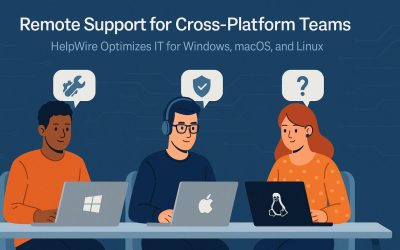The fire risks associated with running a business change depending on each company's operations. Whether your employees work on construction sites, manage residential units or clock in at a traditional office, fire watch experts can help. Explore your options...

Using latest technologies in construction to transform your business
The latest innovations in construction can keep companies competitive and more responsive to client needs. What should decision-makers consider when planning to implement technologies for maximally effective outcomes?
Laying the groundwork for success
Planning construction innovations involves thoughtfully addressing various elements. Proceeding carefully during the early stages increases the likelihood of positive results later.
Collect worker feedback
Begin by gathering information on the most appropriate ways to apply emerging technologies. Construction site workers may be the best sources of these details because their firsthand experiences reveal challenges that you and the rest of your management team may not immediately know about or identify.
Solidify investment plans
Those involved in approving the purchase of innovative construction tools or similar offerings should also consider how much of their budgets they will devote to these investments and over how long. This phase is also an ideal opportunity to identify key performance indicators that will reveal whether your team is on track for meeting goals.
A 2023 study of technological innovations within the architecture, engineering and construction industry showed it has historically been one of the slowest adopters of technology, but things have recently changed. The data indicated estimated technological investments within it totaled approximately $50 billion from 2020 to 2022. That figure was 85% higher than the previous three years. Prioritizing construction innovation now is a practical way to remain competitive in the future.
Research potential vendors
Whether you want to streamline communications between various construction project stakeholders or improve site safety, technological solutions can get you closer to those and other goals. Simplify your searches by familiarizing yourself with the top providers of the most applicable solutions.
By learning to use technology to your advantage, you can start incorporating these offerings into your workflows and budgets. You can also decide if you want to apply several new tools at once or only one. Market researchers expect the global construction technology market to surpass $10 billion by 2030, so there are many companies, products and platforms to consider.
Determine the implementation scope
Deciding the extent to which your construction company will embrace new technologies can keep everyone informed as things progress. Will the business rent equipment before buying it to verify that specific features will bring the expected advantages? Should your firm begin using the technology with its well-established clients first or all of them?
A phased adoption could be ideal for companies with limited resources or those new to technology. Choosing a slower or more restricted rollout gives participants more time to figure out what works well and which areas need urgent improvements.
Using the new technologies
After people have chosen which technologies to use and set an adoption time frame, they should follow some best practices to help everyone enjoy a smooth transition.
Set worker expectations
Your team will understandably be curious about why you have decided to begin using advanced technologies. They will feel more at ease with the process if leaders take the time to explain how these upgrades will affect their work and what advantages they can anticipate. For example, will new technology in construction equipment alert machine operators to environmental hazards to keep them and others safer? Can people do more in less time once they learn to use the solutions?
The construction industry makes an estimated $2.1 trillion worth of structures each year. Technologies such as augmented reality applications and building information modeling platforms can increase productivity and precision, improving outcomes for site workers and clients alike. Teaching employees about these advantages can make them more excited about the future.
Allow ample training time
Construction teams will feel more eager to use emerging technologies if they have plenty of time to grasp the basics and have support from others along the way. All implementation timelines should include time for worker education.
Some managers also select specific team members to become early adopters and teach their colleagues the ropes. This process can work well because many people retain information better when they learn it from peers they already know and trust.
Consider deploying equipment-tracking software
Some of the latest new technology in construction equipment can give fleet managers detailed statistics and real-time notifications of potential issues. These particulars can raise efficiency through better visibility and prevent breakdowns.
Some solutions safeguard assets by showing equipment locations and allowing authorized parties to set boundaries and get alerts if equipment goes outside those zones. Those make it easier for law enforcement officials to recover stolen equipment.
Stay abreast of innovation in construction
Once construction businesses adopt the latest technologies, company leaders should continue staying informed of developments and reporting them to their colleagues. Keeping your fingers on the pulse of progress ensures you know the latest and most effective ways to use the technologies they already have or ones they may incorporate soon.
For example, some analysts expect people will soon use well-established construction technologies differently. One trend mentioned in a 2025 report is the “whole digital twin.” It is already common for construction companies to create digital twins of physical buildings, such as to streamline remodeling and new-build projects. However, whole digital twins are more extensive, containing several components to fulfill distinct purposes, such as interpreting datasets or establishing feedback loops between operations and engineering professionals during construction projects.
Conclusion
Well-incorporated construction technologies can help companies stand out in a crowded market. These advanced solutions elevate productivity, reduce mistakes, improve safety metrics, and facilitate communication between multiple parties.
Besides using the above tips, people should keep comprehensive records of their processes and what they learn while choosing or working with new technologies. That information could become invaluable as company leaders increase their dependence on innovations over the years.
More must-read stories from Enterprise League:
- Innovative and profitable business ideas with no employees.
- Find out all the things that make messy people smarter.
- How to ask for a deposit in a contract without being awkward or losing a client.
- All the reasons why we should support local businesses and shop local.
- B2B payment solutions that can help you transform your business.
Related Articles
What Are My Options for 24-Hour Fire Watch Services Near Me?
Remote Support for Cross-Platform Teams: How HelpWire Optimizes IT for Windows, macOS, and Linux
In the current business environment, IT teams are tasked with supporting increasingly complex and diverse workforces. With many companies transitioning to remote and hybrid work models, the need for reliable, cross-platform support has never been more apparent....
What Are the Best Drying Agents for Car Washes to Speed up Service? 10 Options
In car wash operations, every second counts. A top-performing drying agent reduces water spots, speeds service, increases throughput and enhances customer satisfaction. The right formula can turn average results into showroom shine while helping your business operate...
6 B2B Lead Finder Tools That Help You Book More Meetings
Sometimes, all it takes is one meeting to get your big break. To get there, you have to send out dozens of emails, follow up politely, and even try to personalize your approach for maximum engagement. But, if you aren't talking to the right people, it doesn't matter...
Realmo brings commercial real estate analytics to Main Street, expanding its AI navigator to over 9 million U.S. properties
[Boston, MA: 25 Nov 2025] A next-generation commercial real estate decision-support platform Realmo announces today an expansion of its database to over 9 million commercial properties across the U.S. This milestone provides investors, sellers, and deal-makers with an...
















